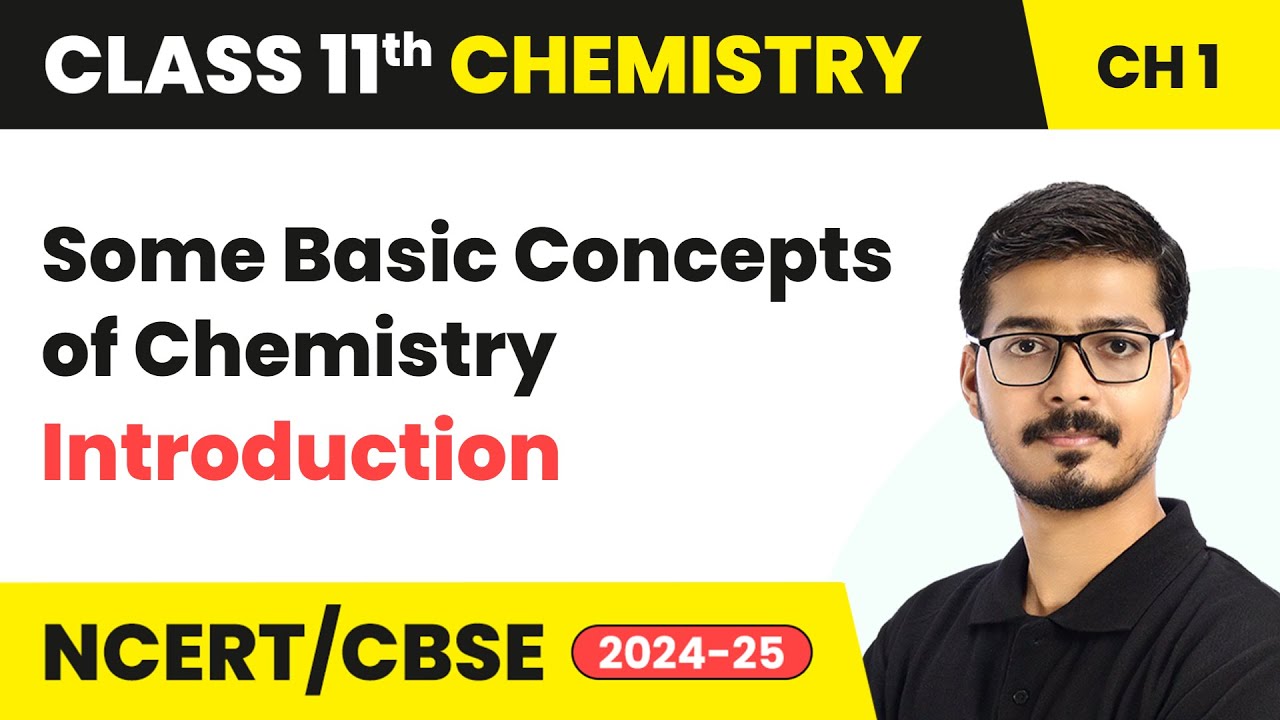This Is Chemistry: Part 1: What is an Atom?
Summary
TLDRThis script delves into the fundamental concepts of chemistry, exploring the atom as the basic unit of matter. It highlights that atoms, though considered indivisible, can be further divided into subatomic particles: protons, neutrons, and electrons. The nucleus, composed of protons and neutrons, holds most of an atom's mass, while electrons orbit it, balancing the charges to maintain a neutral state. The script sets the stage for a deeper exploration of atoms' diversity and their role in forming compounds, hinting at the complexity and wonder of the chemical world.
Takeaways
- 🧪 Chemistry is the study of matter and the changes it undergoes as atoms form bonds and compounds react to create new substances.
- 🌐 It acts as a bridge between other sciences, integrating various fields and concepts.
- 🔬 The script introduces the concept of atoms, which are the smallest units of an element that retain the element's chemical properties.
- 🌍 The analogy of dividing people into categories is used to illustrate the idea of breaking down matter into its smallest parts, atoms.
- ⚛ The word 'atom' originates from Greek, meaning 'indivisible', emphasizing the fundamental nature of atoms in matter.
- ⚔ The atomic nucleus, containing protons and neutrons, holds most of an atom's mass.
- ⚡ Protons carry a positive charge and are balanced by electrons' negative charge in a neutral atom.
- 🪐 Neutrons are neutral particles within the nucleus and contribute to the mass but not the charge of an atom.
- 🌀 Electrons orbit the nucleus and are much smaller and lighter than protons and neutrons.
- 🔋 The number of protons in an atom determines its element, while the number of electrons determines its charge state.
- 📺 The script hints at a continuation in part two, suggesting further exploration of atomic differences and complexities.
Q & A
What is the primary focus of chemistry?
-Chemistry is the study of matter, including the 118 elements that make up everything we see, and it also studies the changes that occur as atoms form bonds to create compounds and react with other compounds to make new substances.
How does chemistry act as a bridge between other sciences?
-Chemistry acts as a bridge between other sciences by holding everything together at the atomic and molecular level, explaining the properties and interactions of matter that are fundamental to all scientific disciplines.
What is the significance of the term 'atom' in the context of the script?
-The term 'atom' is significant as it refers to the smallest unit of an element that retains the properties of that element. It comes from the Greek 'a-tomos', meaning indivisible, which is a concept explored in the script.
How can the concept of dividing people into categories be related to the concept of atoms?
-The concept of dividing people into categories, such as by country, state, or city, is analogous to dividing matter into smaller and smaller pieces until reaching the indivisible atom, which is the basic unit of an element.
What are the main components of an atom?
-The main components of an atom are the nucleus, which contains protons and neutrons, and the electrons that orbit the nucleus.
What is the role of the nucleus in an atom?
-The nucleus of an atom contains most of the atom's mass and is composed of protons, which are positively charged, and neutrons, which are neutral. The nucleus is the central part of the atom.
Why do protons in the nucleus repel each other?
-Protons in the nucleus repel each other due to their like charges. They are all positively charged, and like charges repel each other according to the principles of electromagnetism.
What keeps the protons in the nucleus from being repelled apart?
-The strong nuclear force, which is a fundamental force in nature, keeps the protons in the nucleus from being repelled apart despite their like charges.
What is the relationship between the number of protons and electrons in a neutral atom?
-In a neutral atom, the number of protons and electrons are equal, resulting in no net charge. Each electron has the exact opposite charge of a proton.
What is the significance of the atomic bomb in the context of the script?
-The atomic bomb is mentioned in the script as a historical event that demonstrated the reality of atoms and their indivisible nature when subjected to extreme conditions.
What can we expect to learn in part two of the script?
-In part two of the script, we can expect to learn that not all atoms are created equal, indicating that there will be a discussion on the differences between various types of atoms and their properties.
Outlines

Esta sección está disponible solo para usuarios con suscripción. Por favor, mejora tu plan para acceder a esta parte.
Mejorar ahoraMindmap

Esta sección está disponible solo para usuarios con suscripción. Por favor, mejora tu plan para acceder a esta parte.
Mejorar ahoraKeywords

Esta sección está disponible solo para usuarios con suscripción. Por favor, mejora tu plan para acceder a esta parte.
Mejorar ahoraHighlights

Esta sección está disponible solo para usuarios con suscripción. Por favor, mejora tu plan para acceder a esta parte.
Mejorar ahoraTranscripts

Esta sección está disponible solo para usuarios con suscripción. Por favor, mejora tu plan para acceder a esta parte.
Mejorar ahoraVer Más Videos Relacionados

Elements and atoms | Atoms, compounds, and ions | Chemistry | Khan Academy

Perbedaan Atom, Unsur, Senyawa, Molekul dan Ion | KIMIA KELAS 10

Aula 1 - Estados físicos da matéria e suas transformações

Introduction - Some Basic Concepts of Chemistry | Class 11 Chemistry Chapter 1 | CBSE 2024-25

Dalton’s Atomic Theory | Don't Memorise

What is an Atom -Basics for Kids
5.0 / 5 (0 votes)
